|
|
|
| |
 |
|
|
|
| |
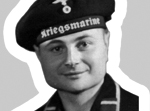 |
Petty officer, second class
Gerhard Oesper
Ship's artillery
* 4.1.1916 in Blatterndorf (Thuringia) - † 27.5.1941
|
 |
|
|


Germany (1916)
Source:
Dieter and Heiko Luther / Effelder
Isolde Katzmarzik née. Stegner (cousin) / Weinheim
Hedi Roschlau (cousin's daughter) / Sonneberg / Hönbach
Light cruiser Königsberg
Layed down: |
12.04.1926 |
Launch: |
26.03.1927 |
Commission: |
17.04.1929 |
End: |
10.04.1940 (sunk) |
Displacement: |
6.700 ts |
Size: |
174 x 15 m |
Crew: |
850 Mann |
|
The Königsberg was part of the reconnaissance forces as a unit command ship until 1936. She then served the naval artillery school as a training cruiser and patrolled Spanish waters during the Civil War. After the second world war began, the Königsberg returned to the reconnaissance forces, laid minefields and provided escort. During the occupation of Norway, she was sunk in Bergen by British dive bombers.

|
Gerhard Oesper was born on January 4, 1916 in the Thuringian community of Blatterndorf near Sonneberg. He was the only son of Ferdinand and Klara Oesper. He grew up with his cousin on his parents' farm in Unterlind, near Sonneberg on the southern slope of the Thuringian Forest near the state border with Bavaria. His parents earned their living as farmers, which meant that their son did not have to go hungry during the difficult war and post-war years. From an early age he was involved in agricultural work. Later he was to follow in his parents' footsteps and take over the farm, and so after completing primary school he attended the agricultural school in Sonnenberg. He was a good student and graduated there too. In his free time he enjoyed making music and as he got older he became more and more enthusiastic about dancing. His cousin Isolde, with whom he grew up and who was more like a sister to him, describes him as a "trustworthy, correct and lovable young man".
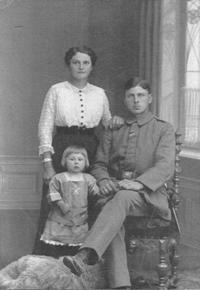 As a child he had joined the Marine Hitler Youth, which had awakened his interest in seafaring, and so Gerhard Oesper eventually decided to join the navy himself and make a career there. His parents did not agree with his choice of career, but their son got his way and volunteered in 1935 at the age of 19. His application was successful and as he was not drafted into the Labor Service (Reichsarbeitsdienst), he was able to begin his service in the Navy in the summer of the same year. Gerhard Oesper said goodbye to his family and traveled by train about 550 km north to his destination. The nineteen-year-old began basic training with the 2nd Company of the IIIrd Marine Artillery Division in Swinemünde. His parents could not travel to the swearing-in ceremony, but he told them in letters that he was very happy with his decision to join the navy.
As a child he had joined the Marine Hitler Youth, which had awakened his interest in seafaring, and so Gerhard Oesper eventually decided to join the navy himself and make a career there. His parents did not agree with his choice of career, but their son got his way and volunteered in 1935 at the age of 19. His application was successful and as he was not drafted into the Labor Service (Reichsarbeitsdienst), he was able to begin his service in the Navy in the summer of the same year. Gerhard Oesper said goodbye to his family and traveled by train about 550 km north to his destination. The nineteen-year-old began basic training with the 2nd Company of the IIIrd Marine Artillery Division in Swinemünde. His parents could not travel to the swearing-in ceremony, but he told them in letters that he was very happy with his decision to join the navy.
After three months of basic training, he was given his first command on board a warship. Gerhard Oesper experienced his first on-board command on the light cruiser Königsberg, which was a training cruiser belonging to the ship's artillery school. He was part of the seaman personnel of the 1st Division and his combat station was probably in one of the three 15 cm turrets of the main artillery. He made several trips through the North and Baltic Seas on the Königsberg. The training trips also took him abroad, for example to Norway for eight days. Gerhard Oesper experienced his first war mission on the Königsberg when the cruiser set sail for the Mediterranean in November 1936, just a few months after the outbreak of the Spanish Civil War, to patrol the coast. The mission lasted a full 50 days, so the crew had to celebrate Christmas and New Year on board. During the mission, several Spanish ports were called at, but there were no serious incidents with the civil warring parties, especially since an international agreement stipulated a peaceful and neutral approach.
|
|
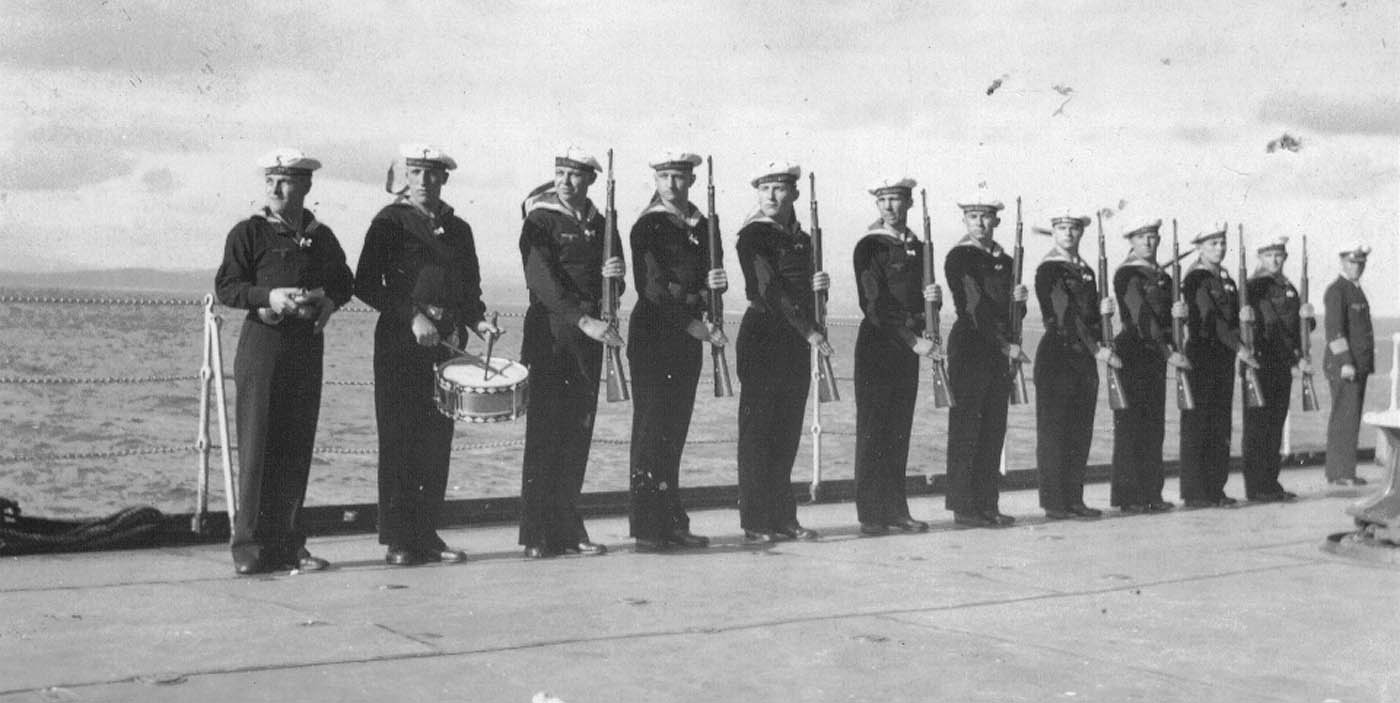 The guard of honour of the Königsberg
Bildergalerie – Kreuzer Königsberg
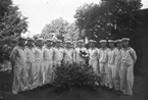


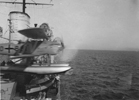


Click on the pictures to enlarge.
|
|
|
|
|
|
|
During his service on board the cruiser, Gerhard Oesper spent at least one holiday at home with his family. He was on board the Königsberg for two and a half years and during this time was promoted from sailor to ordinary seaman and finally to able seaman. As he had proven himself in service, towards the end of his service on board the cruiser he was recommended and selected as a petty officer candidate. In April 1938, a course followed which took the 22-year-old to the sailing training ship Gorch Fock for two and a half months. On board, both officer and non-commissioned officer candidates were familiarized with the original craft of sailing. The course participants sailed their three-masted barque to Norway, to the picturesque Hardangerfjord south of the city of Bergen, from where Gerhard Oesper wrote a short greeting card to his family at home. Sailing demanded a lot from the young men, but also gave them valuable experience and adventures.
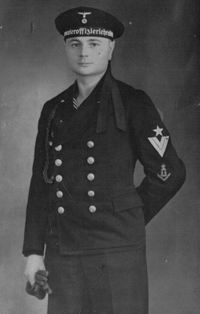 After completing the course, Gerhard Oesper was already waiting for the next course in Kiel. This was a four-month specialist course to become a gun leader for naval artillery guns with turret mounts, which he completed from mid-June 1938 at the Naval Artillery School in Kiel-Wik. In theory and practice, the highly complex structure of the gun turrets was studied in detail by the course participants and the processes and operation were practiced. "I have an awful lot to learn," complained Gerhard Oesper to his relatives at home a few days after the course began, but otherwise everything was "all right". After passing the course, the general petty officer course at the Naval Non-Commissioned Officer Training Department in Kiel-Friedrichsort followed at the end of October 1938. He completed this successfully too and was finally promoted to petty officer on April 1, 1939.
After completing the course, Gerhard Oesper was already waiting for the next course in Kiel. This was a four-month specialist course to become a gun leader for naval artillery guns with turret mounts, which he completed from mid-June 1938 at the Naval Artillery School in Kiel-Wik. In theory and practice, the highly complex structure of the gun turrets was studied in detail by the course participants and the processes and operation were practiced. "I have an awful lot to learn," complained Gerhard Oesper to his relatives at home a few days after the course began, but otherwise everything was "all right". After passing the course, the general petty officer course at the Naval Non-Commissioned Officer Training Department in Kiel-Friedrichsort followed at the end of October 1938. He completed this successfully too and was finally promoted to petty officer on April 1, 1939.
Gerhard Oesper's first command as a petty officer took him to the 5th Schiffsstammabteilung in Eckernförde, where he was now working as an instructor. Before that, however, he went home on leave and used the opportunity to get engaged to his girlfriend Gerdi. Back in the Eckernförde barracks, he wrote to his cousin on April 13, 1938: "I'm happy to have arrived back here.
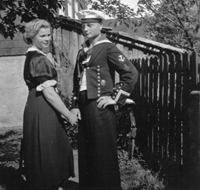 Recruits are currently being recruited and then training will begin. I settled in straight away. Please give my warmest regards to your parents and Aunt Hilda. Best wishes, your Gerhard." As a group leader, Gerhard Oesper now trained a group of recruits from the 1st Company. He was the smallest of his recruits. Marching and drilling, shooting and lessons were among the activities on the duty roster, which he, as superior, had to implement with his group. But he also enjoyed taking part in social events outside of work.
Recruits are currently being recruited and then training will begin. I settled in straight away. Please give my warmest regards to your parents and Aunt Hilda. Best wishes, your Gerhard." As a group leader, Gerhard Oesper now trained a group of recruits from the 1st Company. He was the smallest of his recruits. Marching and drilling, shooting and lessons were among the activities on the duty roster, which he, as superior, had to implement with his group. But he also enjoyed taking part in social events outside of work.
|
|
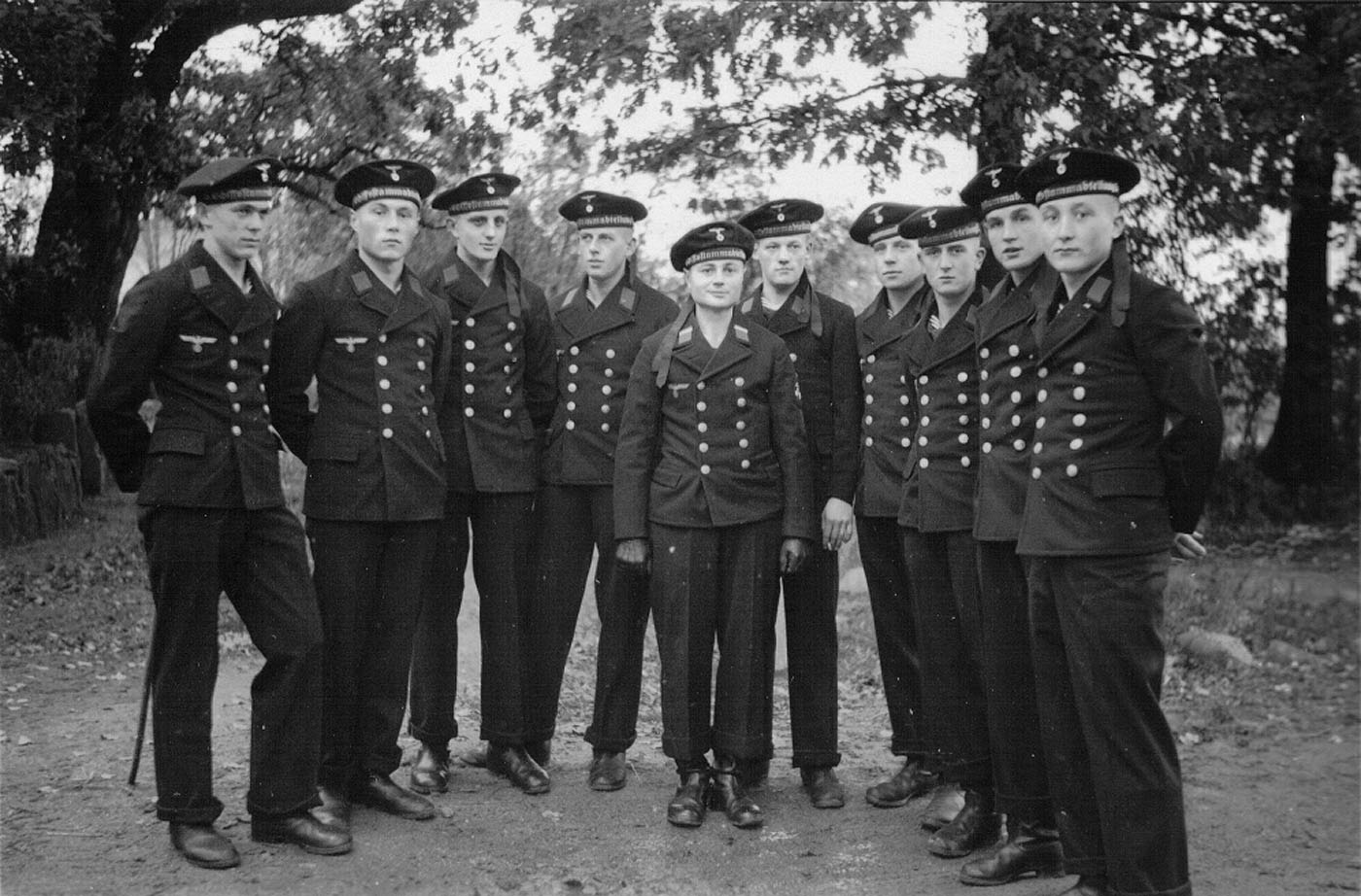 Gerhard Oesper taking a walk with his recruits
Bildergalerie – Als Ausbilder an der 5. Schiffsstammabteilung
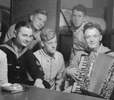
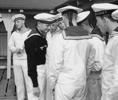
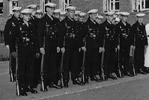
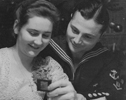
Click on the pictures to enlarge..
|
|
|
Gerhard Oesper was given a command on board the battleship Bismarck on September 3, 1940. As part of the seafaring personell, he served on board with the naval artillery. Shortly before departure in May 1941, he was promoted to petty officer, second class.
Gerhard Oesper did not survive the sinking of the ship. He died on May 27, 1941 at the age of 25. His family at home heard about the sinking of the Bismarck on the radio. Some time later, they were horrified when they received the missing persons report — their son, grandson, nephew and fiancé had not survived. They said goodbye to Gerhard Oesper in a family prayer service. They never forgot him. The few remaining photos survived the time in a small cigar box. Heiko Luther reports on dealing with the past: "Dealing with Gerhard Oesper's story is very emotional and has also kept me very busy and made me think. Gerhard Oesper suddenly comes back to life and is not forgotten. You hear about the thousands of people killed in the Bismarck and the many fallen in the war on both sides who had to sacrifice their young lives senselessly, but you can't imagine anything from the sheer number of figures. But everyone had a face, a family and a mother. A mother who waited her whole life for her son to return, like all mothers. It is very touching. Especially when you see the photos. You see a friendly, smiling young man in the sailor's uniform of the Kriegsmarine, a young man during training at the non-commissioned officer's school, on leave at home, a young man who had no future after all and who met a terrible death for 'Führer and Fatherland'. His fate is a warning to us today. It must not be repeated."
|
|
|
| |
You can read the story of petty officer, second class Gerhard Oesper on page 319 in Volume 1.1 of our book Battleship Bismarck – the True Face of a Warship.
Take a look inside the book |
 |
|
|
| |
Contact |
Updates |
Legal Notice |
German
|
|
|
|
|